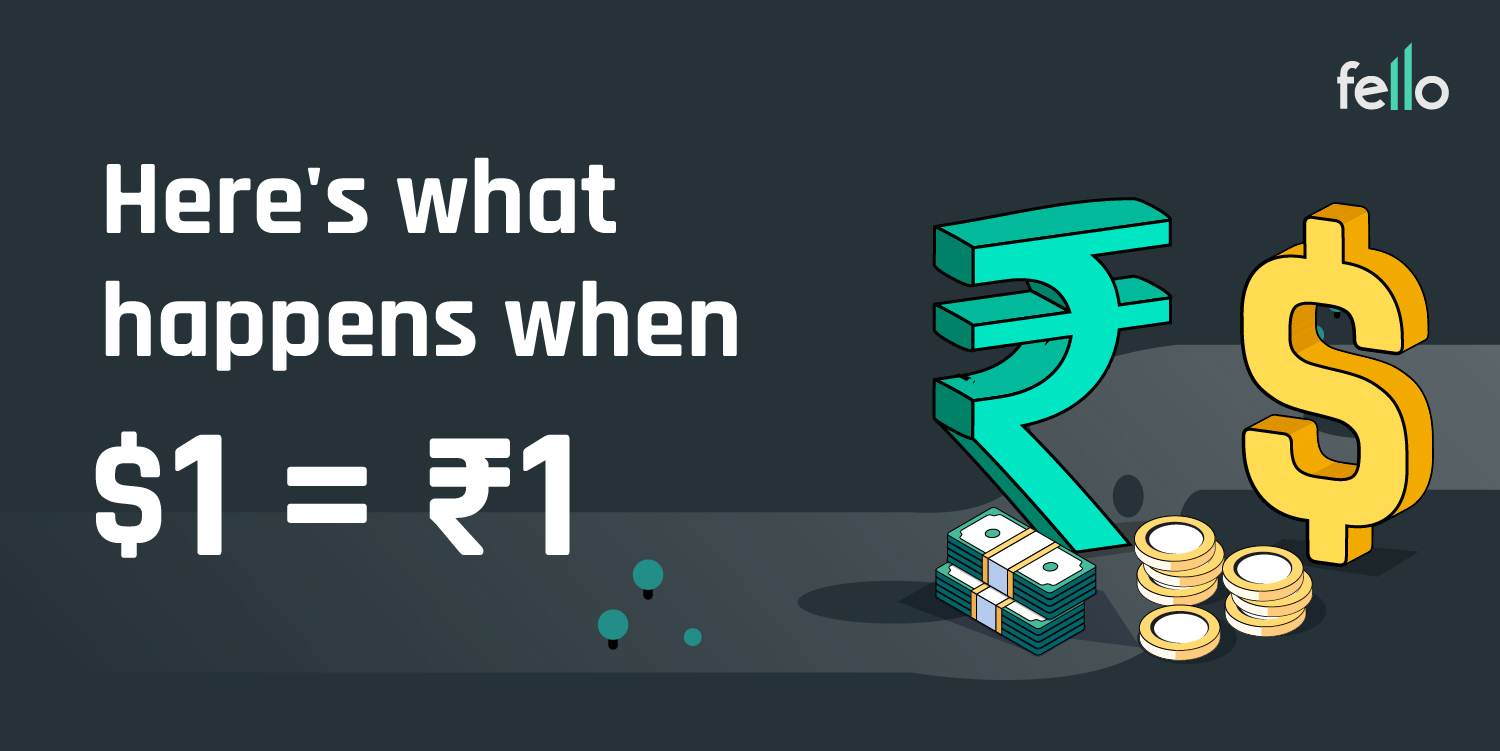Ever since we remember, we have all hoped for Indian Rupee to catch up with the US Dollar. But on the contrary, the value of the US Dollar is constantly on the rise and has hit a staggering ₹82.21 in April 2023.
Before we dive deep into the reason, let me break a common misconception for you. The value of a currency being higher doesn’t mean the economy is stronger. Yes, if that’s the case, 1 Bangladeshi Taki equals 1.269 Japanese Yen. But is Bangladesh’s economy bigger than Japan’s? Not at all.
The de-dollarization effect:

Amidst the recession and post-pandemic economic downfall in the West, there seems to be a potential power shift from the US Dollar, “the de-dollarization effect.” A lot of countries are opting to trade in Euros and quite a few in Chinese Yuan. However, a total of 18 countries have agreed to trade in INR.
And why does India happen to be the frontrunner? It’s simply because of the massive human resource and the ever-growing economy! If every country chooses to trade in INR, the demand for the currency increases and so does the value. So, what happens when ₹1 = $1
The value of the Rupee:
Post our independence in 1947, the value of ₹1 was equal to $1. However, post the independence, the government made a lot of reforms and developments by borrowing money from other countries. As we were not able to pay the debt back to the lending countries, the government devalued the Indian currency. Print more money so that its supply increases, and naturally the value of the currency decreases.
And over the years, the value of INR has constantly dropped in comparison to the USD. And today, with $1 being ₹82, Indian export has benefitted a lot. Simply because the demand for Indian products/services is high as the cost is cheap. And this is exactly the reason China devalues its currency every now and then.
On the other hand, the cost of imports has peaked over the past few years. Especially when it comes to luxury products and oil. One such example is the iPhone. The cost of the brand’s mobile phones has well and truly been costlier than ever. But have we ever thought, who declares these exchange rates and how?
Fixed exchange rate vs Floating exchange rate vs Managed exchange rate:
Fixed exchange rate: Under a fixed exchange rate system, the central bank or government of a country fixes the value of its currency in terms of a certain reference currency or a basket of currencies. The value of the currency remains fixed and is not allowed to fluctuate in response to changes in market forces such as supply and demand.
Floating exchange rate: Under a floating exchange rate system, the value of a currency is determined by market forces such as supply and demand. The exchange rate fluctuates freely and is not controlled by the government or central bank.
Managed exchange rate: Under a managed exchange rate system, the central bank or government of a country intervenes in the foreign exchange market to influence the value of its currency. The exchange rate is allowed to fluctuate within a certain range, but the central bank may use various tools to prevent excessive volatility.
So, What happens when ₹1 equals $1?
Pros:
- Import costs become cheaper. An iPhone that’s valued at US$999 will cost just ₹999.
- Your visits to the fuel station will not hit your wallet. Petrol and Diesel prices will drop.
- Traveling and studying abroad will be cost-effective.
- Flying and staying abroad will be easily affordable; be less conscious of spending.
- The cost of precious stones, gold, and diamond, will go down.
Cons:
- Exports will shrink as Indian products become less affordable.
- Foreign investments overlook India as it becomes costlier.
- Outsourcing of jobs in India will be stopped.
- Investment in the IT and service sector will falter which will lead to unemployment.
- Fewer exports mean fewer resources available for imports too.
This means one thing, ₹1 = $1 is not ideal for a growing country like India. Because growing countries are heavily reliant on their exports. And with the value of the currency being high, exports don’t perform as well. China being one of the largest exporters in the world, wouldn’t ideally want their currency to be as high as a USD.
And the same goes for India at his point in time. Because a major chunk of the value comes from services. Any country that wants its currency to be on the higher end of the scale, should ideally be import oriented. And if India does aspire to do that, the major reliance on crude oil and electronic equipment should be cut down.
To wrap it up, it is highly unlikely that the Indian Rupee’s value will go as high as the Dollar’s value. We all would have aspired to see the Indian Rupee outvaluing the US Dollar, but at what cost? Certainly not at the cost of severe unemployment and minimal exports.

